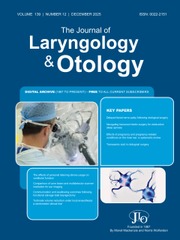No CrossRef data available.
Article contents
The Medical Treatment of Tinnitus
Published online by Cambridge University Press: 27 March 2025
Extract
Of the three methods for the treatment of tinnitus now available, masking, biofeedback and medical, we believe medical treatment has the most promise for the future. The masking treatment substitutes one potentially annoying external noise for the patient's own internal noise and in our experience is of little value. The biofeedback treatment requires a rather sophisticated patient and therapist to begin with, and only helps a limited number of those well suited to the treatment program. The drug therapy is, however, immediate and real, not dependent on the patient, and limited only to the number of drugs having an effect on the end-organ and the central pathways of hearing.
Tinnitus is a problem of enormous proportions. A probability sampling of 6672 adults selected at random in the United States, ranging in age from 18 to 79 years, during the years of 1960 to 1962, revealed that 32 per cent of adults (36 million out of the U.S. population of 220 million) experienced tinnitus, and that 6·4 per cent (7·2 million out of the U.S. population of 220 million) of them complained of severe and at times debilitating tinnitus.
- Type
- Session IV—Treatment (Moderator: Jack L. Pulec)
- Information
- The Journal of Laryngology & Otology , Volume 95 , Issue S4: Proceedings of the First International Tinnitus Seminar (New York, 8-9 June, 1979) , September 1981 , pp. 130 - 138
- Copyright
- Copyright © JLO (1984) Limited 1981


